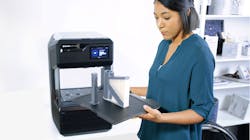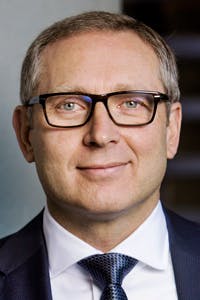MakerBot/Ultimaker Merger Reaches for 3D’s Potential
The merger of MakerBot and Ultimaker announced on May 12 brings together two companies with complementary skill sets and technologies in the 3D printing space.
MaketBot, a subsidiary of Stratasys Ltd. and based in New York, and Ultimaker, backed by venture capital company NPM Capital and located in the Netherlands, will have “a broad technology offering, be sufficient in scale, well capitalized and have a focused leadership team to better compete in the highly attractive Desktop 3D printing sector,” said Dr. Yoav Zeif, CEO of Stratasys in a press release. NPM Capital will own 54.4% of the yet-to-be-named company, while Stratasys will own 45.5% of the company.
MakerBot CEO Nadav Goshen and Ultimaker CEO Jürgen von Hollen were named co-CEOs of the new entity. Goshen will manage product, operations and R&D and von Hollen will manage commercial functions. The company will retain headquarters in both in the Netherlands and New York City.
Machine Design discussed the opportunities and challenges of the new company with both Goshen and von Hollen in a written interview:
Jürgen von Hollen: We are very complementary in many aspects of the business. From a sales perspective, if you look at the go-to-markets, Ultimaker is 100% channel and MakerBot is more diverse with channel and direct sales and are closer to their customer base. The ability to understand the customer is critical, and by combining that with Ultimaker’s application engineering competence, we can bring a strong portfolio of solutions and coverage across the world.
Nadav Goshen: We have a shared vision, and it is to make the desktop 3D printing more accessible as well as offer a more professional-grade solution. We can achieve that by combining our teams. This is all about growth—we are doing this to grow the market and bring more solutions to the market.
“The 3D printing market is very fragmented right now. We first want to be very specific and focused in the way we go to market and in the way we position our products so that customers have a better understanding and level of confidence when choosing the solution to meet their needs.”
—Ultimaker CEO Jürgen von HollenThere has been a lot of confusion in the market over the past few years, and we want to bring more clarity and help overcome today’s technology limits. That’s where our businesses complement each other. MakerBot has a lot of know-how that was driven by Stratasys’ high-end processes and Ultimaker has a lot of innovation in software. Together, we can elevate 3D printing technology to our customers.
MD: With the additional investments you’ve secured, what are some of the near-term goals you’d hope to achieve?
NG: The investment will be used to drive growth of the new entity through commercial expansion to expand global reach and through technological innovations, such as R&D and strategic partnerships, and to create new solutions to meet our customers’ needs. The new entity will also aim to focus on sustainability and work towards a future state of flexible, responsible and sustainable manufacturing.
In the next few months, we will go into sessions integrating the companies into one. That process will involve combining teams together and some growth opportunities. We are currently working on this and will continue to work on it in the next few months.
MD: What is your assessment of the current 3D market? Where are the opportunities for the future, and how does this merger better position you for those opportunities?
If you look at the potential of the applications, the opportunities for us are to simply enable our customers, partners and resellers, and work with them to create and deliver solutions that fit their requirements. But the 3D printing market is very fragmented right now. We first want to be very specific and focused in the way we go to market and in the way we position our products so that customers have a better understanding and level of confidence when choosing the solution to meet their needs.
“There has been a lot of confusion in the market over the past few years, and we want to bring more clarity and help overcome today's technology limits. That’s where our businesses complement each other. MakerBot has a lot of know-how that was driven by Stratasys’ high-end processes and Ultimaker has a lot of innovation in software. Together, we can elevate 3D printing technology to our customers.”
—MakerBot CEO Nadav Goshen
MD: What advantages do you have with Stratasys as one of your investors?
NG: We will continue to leverage the strong technical expertise we have learned from working with Stratasys. The new investment from NPM and Stratasys will be used to drive growth of the new entity through commercial expansion to expand global reach and through technological innovations, such as R&D and strategic partnerships, and to create new solutions to meet our customers’ needs.
About the Author

Bob Vavra
Editor Emeritus, Machine Design and Power & Motion
Bob Vavra is the former senior content director of Machine Design and Power & Motion.


